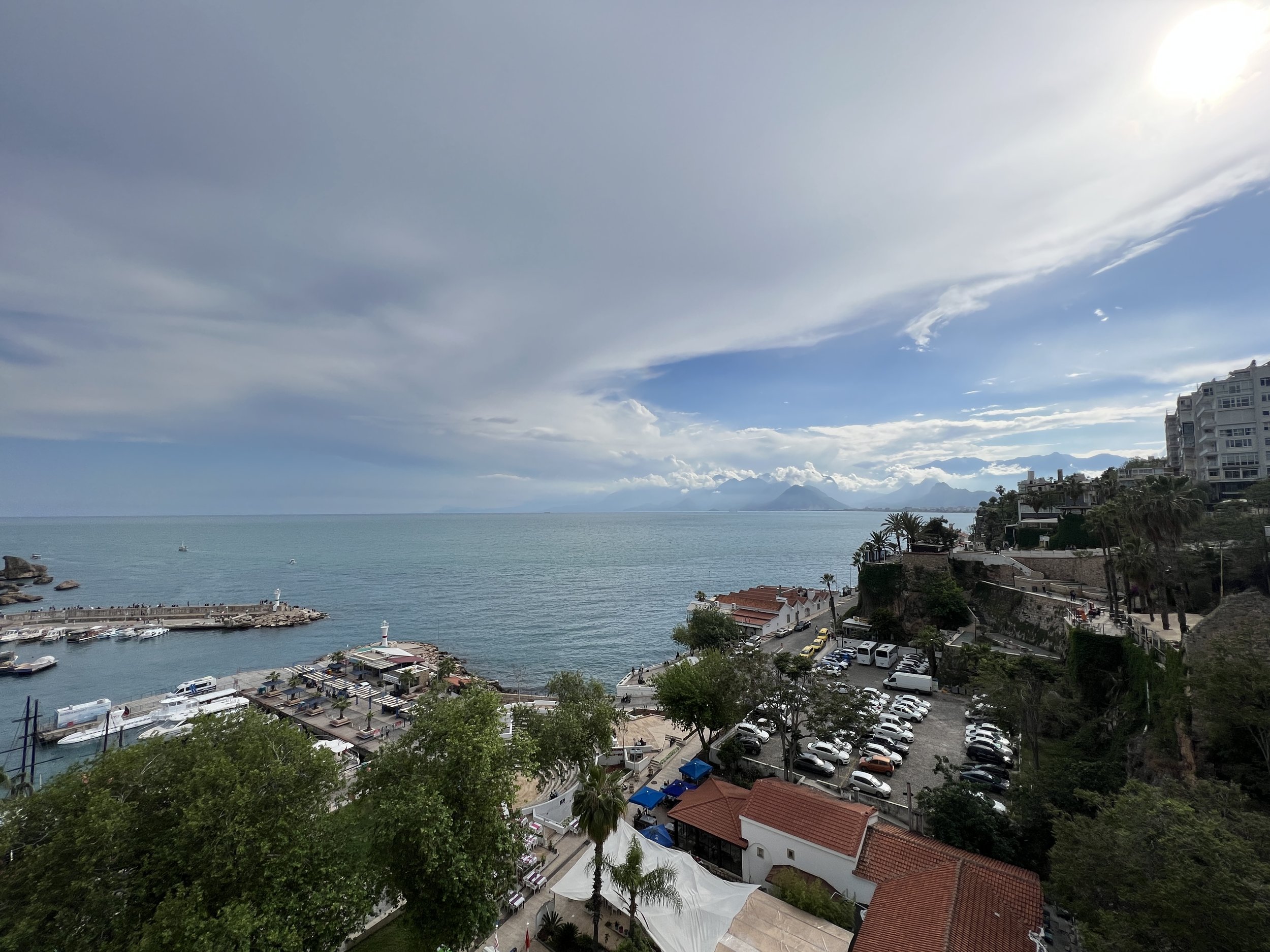Perge & Aspendos
May 7, 2023
Left our hotel home away from home early this morning after 2 nights - so there was time for laundry, yay!!
We started the day with a drive south through the Taurus mountains toward the Mediterranean cost. We stopped along the way to get a view of the lake and mountain pass that Paul would have walked between Perge and P. Antioch. Craig flew the drone a little over the lake.
Our first destination was Perge where Paul and Barnabus went after preaching throughout Cyprus. Coming by ship from Cyprus, they landed at Antalya and sailed up the river to Perge. Perge was a huge and very rich city. Their position close to the sea, but set back from it and connected to it by river, meant lots of commerce but safety from pirates. There is evidence of settlements here from 3000 BC forward. Hittite tablets call this city Parha. Perge was controlled by a number of different empires - having no defensive walls until the Byzantine era, they cooperated with would be invaders.
You enter the site through a Byzantine gate, and then walk between two round towers that comprised the Hellenistic gate from 2nd century BC and would have been the gates that Paul walked through to begin his journey to Pisidian Antioch. Because of the history of Paul here, they have excavated a number of churches dedicated to him before the city was abandoned around 1000 AD after the advance of the Seljuk empire.
Perge at the north end had a grand fountain that began a flow of water all the way through the city in the center of the main road and down to the agora where there was another massive fountain. You can walk into the fountain today and see all of the clay piping works. It must have been a stunning site! They were unbelievable engineers.
Like all important Greco Roman cities, there was a large theater and stadium.
From here we went to a very similar ancient Roman city in the area, also set off a bit from the sea but connected by a river, Aspendos. Aspendos boasts the most intact Roman theater in the Mediterranean and it is still used regularly today. The acropolis, or the main city center, is up a steep hill behind the theater. There is an unexcavated stadium but quite visible. Straight up another steep path is the agora and a huge basilica (not a church But a public meeting hall) There are remains of raised aqueduct everywhere. Aspendos has the most intact Roman syphon system at the start of the aqueduct.
From Aspendos we drove to the seaside city of Antalya to see some of the old port and city walls.
Tonight we are all rearranging our bags for a 4 am trip to the airport here to fly to Cyprus for 1 day to visit the biblical site of Salamis - the first time for everyone in the group including our leader. We will only bring a day pack and will fly back to mainland Turkey at Adana where our bus will meet us with our luggage. We will then be in position to see Seleucia Piera and Syrian Antioch where Luke tells us in the book of Acts that believers were first called Christians. This is on the edge of the earthquake zone and we are all feeling a little nervous about seeing that kind of devastation and a little guilty that we have the privilege of driving away from it at the end of the day when so many are still suffering.





































































